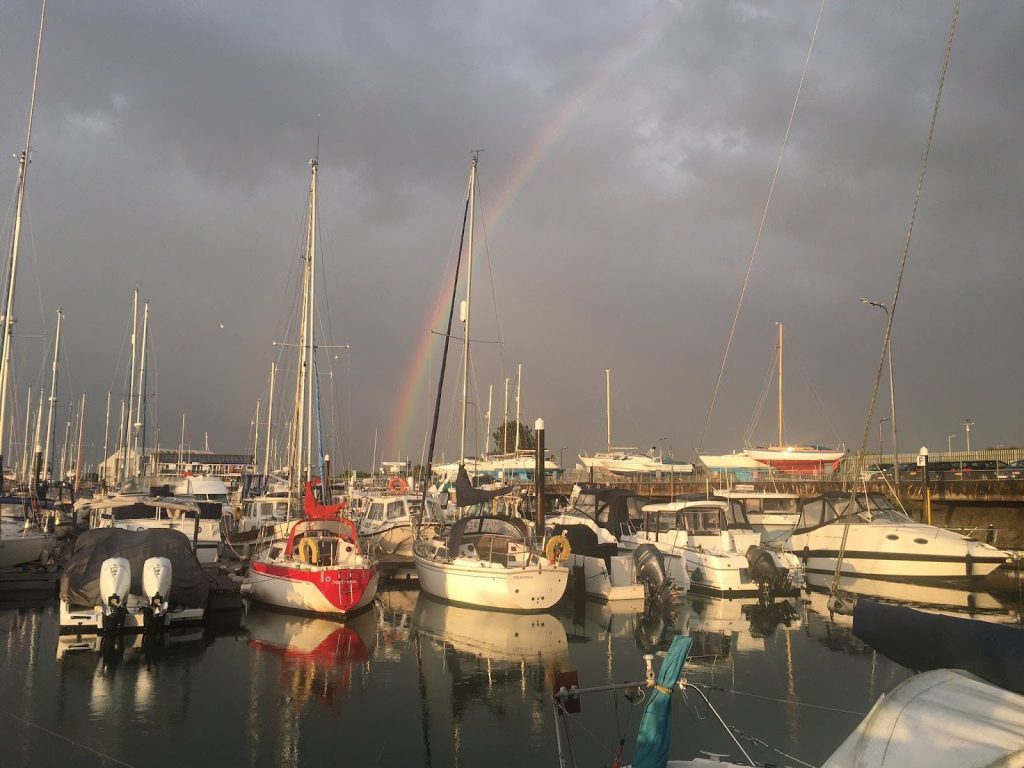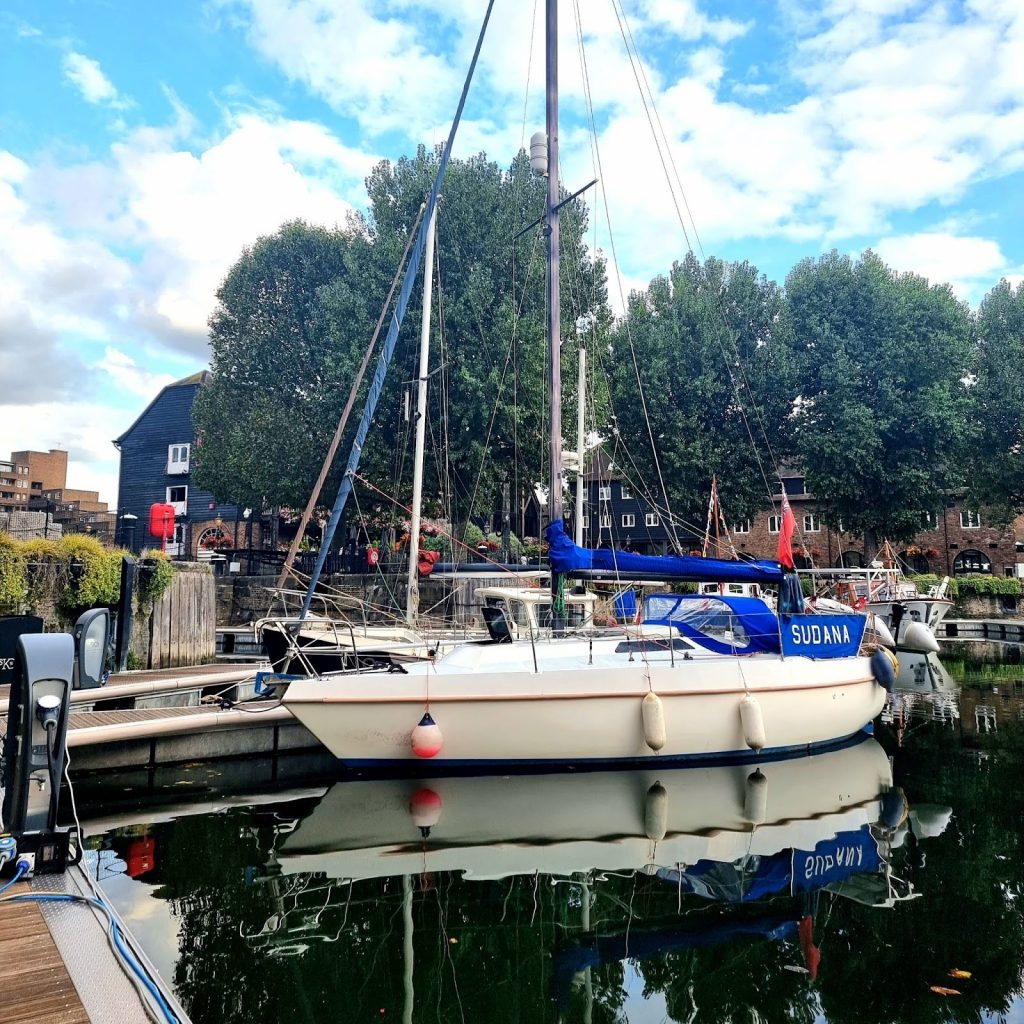Strangford Lough and its tides were our next adventure, an exciting opportunity to explore a sea loch in County Down, Northern Ireland. Sometimes I laugh, and sometimes I could cry at all the tale’s people have told us about the tidal streams within the entrance and narrows of Strangford Lough. Careful passage planning was the order of the day, we checked the weather, tide times, charts, pilot guides and the tidal atlas for the area, complex but good learning and you know how I relish that.
The timing was everything as the tidal flow at the entrance can be more than 7knots, so we aimed to enter at slack water, understanding also that slack water would last 15 minutes at best. The night before we departed Carrickfergus, I spent a little time wondering if all the stories we had heard were nothing more than embellished tales. Or were they accurate depictions of less than fortunate sailors who had travelled uncontrollably backwards with strong tides due to poor timing? After all, the locals who told these stories were frequenting a popular ale house in Portaferry where they would have been weather-beaten and high on racing tactics, so the jury was out. Still, I did think, oh my goodness please let us have studied and interrupted the necessary information correctly as I wish for us to keep stepping forward and for me to keep the faith that I really can navigate the world.
I need not have worried as Gary had this sussed, and we arrived at the entrance to Strangford Narrows bang on time and in perfect sailing conditions. We sailed through the narrows at 13 knots, in fact, I asked if I should take the sails down and then we could navigate the narrows under motor to which Gary answered, ‘we are through the narrows!’ Wow that was fast, and I felt immensely proud of our day sail achievements, I started the engine and dropped the sails to seek a good anchorage for the night.
As we slowly motored around to explore space to drop the hook, Gary noticed a disturbing noise. Oh shit! When I started the engine, the float on the key had stopped the ignition key from returning to its resting place. The starter motor was continuously engaged for 20 minutes or more. My premature celebration was slipping away, but tomorrow was another day and one where I would do everything in my power to rectify this situation. After all, I had been the one who turned the key and sadly had not observed the float jam.
Confirmation came all too soon the next morning. The starter motor was dead! Upon investigation having removed the starter motor, the teeth on the starter motor drive shaft had been ground smooth; however, the engine’s flywheel teeth were fine. Whilst Gary can fix most things, this was shot and in no state of repair. Time to do what I am good at, connect with people and now is not the time to be shy Tanya. After some research, Gary sourced a replacement part from Part4Engines in mainland UK, even in times of COVID-19 they guaranteed a 24-hour delivery timescale. Still, we were on anchor by an uninhabited island, no postcode, and no wind! Frantically ringing any telephone number, I could find, I secured a postal address to receive our part (Blaney’s Ice cream Shop in Portaferry) and a lovely man James who brought our parcel out to us on its arrival. Jessy James, as we now know him, would not take a penny for his troubles. After handing Gary the parcel he just spun around his super-powerful rib and quickly sped off back to Portaferry shouting “You owe me nothing mate, we are all sailors at heart.” A grand and kind gesture, one we will always be grateful for and one day we hope to meet him again over a pint of Guinness.
However, the day before the delivery of our new starter motor, amid sourcing the part and the mirage of necessary phone calls, we were also glued to the VHF radio. Alarming new information was beginning to be broadcast, Storm Francis was approaching, and when the wind filled in, the direction was to change, putting us on a lee shore! Would the anchor hold, did we have enough chain out? The night went without much sleep as Sandpiper pitched and waves crashed upon her decks. The noise was deafening, and the boat’s movement was violent, but somehow, I held my nerve and did not shed a tear. I repeatedly told myself that worrying about what might happen was a waste of my energy.
Gary managed to dose a little bit, and he intermittently got up to observe the position of the transit line, two landmarks ashore, Sandpipers position in relation to these was a good indication of whether we were drifting closer to shore and therefore a clear indication that we were dragging our anchor. Throughout the force 9 gales we were steadfast and at 7am, supposedly the peak of the storm we were still in the same position, confident that we had not dragged through the worst of it we felt we could finally get some sleep. To this day it still amazes us that throughout all the noise and movement we still recognised that something had changed and it woke us up with a jolt. On getting up into the cockpit, we realised the storm had dropped to a force 7, yet we were now closer to the rocky shore. Dressed in a flash, I called in a Pan Pan for assistance, requesting a tow to safety whilst Gary assessed the situation. Gary took the helm and we tacked again and again with a handkerchief of a headsail, this kept us off the rocks, but the RNLI boat speeding towards us was a welcome sight as by now we were no more than two boat lengths from the jagged rocks.

Funny how adrenaline takes over in the moment and how your subconscious tells you to take it easy, regroup and relax after such events. No blame was ever spoken, only learnings. On reflection, I would say I should have rung RNLI the day before, making them aware of our situation and I will from now on always check the blooming key float position. However, on a plus point, I found that the sailing community are unbelievably supportive and kind. I learned that Gary and I worked well as a team in a crisis, something we had never tested before.
It was a bit strange seeing the RNLI publishing the event on the news, on social media, local radio and in their newsletter, never ashamed just forever grateful that RNLI exists and that we subscribe to their charity.

